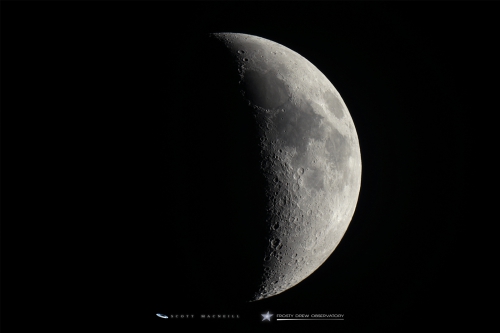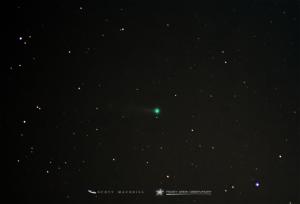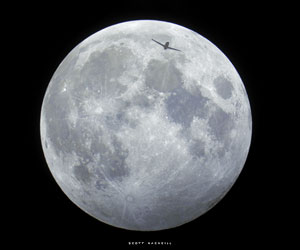
Stargazing Nights
- Where:
- Frosty Drew Observatory
- When:
- Friday February 3, 2017 at 6:00 p.m.
- Cost:
- $1 Suggested Donation per Person
Tonight is Stargazing Night at Frosty Drew Observatory and the forecast is calling for cloudy skies to start with clearings happening overnight. Accompanying us for the first half of the night will be the 45% waxing crescent Moon, which will set at 11:18 p.m., leaving dark skies to rule. Sadly, clearings are not forecast until near midnight, making for a difficult night of stargazing. Though we always make a best effort attempt at Frosty Drew to rock the cosmos and we’ll take the night as it goes.
The Observatory and Sky Theatre will open at 6:00 tonight. In the Observatory, telescopes will start on standby as we monitor sky conditions. If clearings happen, we will direct our telescopes at any accessible objects. Venus, the Moon, Uranus, and more are on our hope list tonight. In the Sky Theatre we’ll be showing a feature of celestial objects photographed at Frosty Drew Observatory with a commentary and open discussion on general astronomy. We plan to stay open until 11:30 p.m. or until the clouds chase us out. If skies clear nicely, we may be open much later. Following @FrostyDrewOBSY on Twitter or Facebook will get you updates from the Observatory on sky conditions and what we are doing, including a “Closing up” post when we decide to pack up.
Overall, tonight could have been a fantastic night of lunar viewing followed by dark sky celebrations. Though clouds have different plans for us and could keep our telescopes closed. There is a bit of variability in what time clearings will happen and how fast the clearing occurs, though it will certainly be cloudy until 9:00 p.m., at the earliest. If you’re in the local area and need a quick astro fix, then stop in and geek out with us. Though if you’re making the long drive, it’s probably a good idea to sit this one out. Even if skies clear early, the Moon will dominate the starscape until the 11:18 moonset, so no dark skies until late. Regardless, this is New England and weather can change quickly and unexpectedly. If you’re feeling optimistic, then swing on over and hope with the best.
------------------
Weekly Happenings
Scott MacNeill
Remember all that New Year’s Eve comet hype a month ago? Well that was about Comet 45P/Honda-Mrkos-Pajdusakova (45P), which reached perihelion (closest approach to the Sun) around that time. We had a fabulous view of Comet 45P in the Frosty Drew telescope on December 30th, followed by a photo op on New Year’s Day, though the best times to view Comet 45P were not at that time, but instead are coming this coming week. On Saturday, February 11th, Comet 45P will make its closest approach to Earth at a mere 8,366,023 miles distant, placing Comet 45P into a fabulous part of the sky for viewing. Unfortunately, the approaching full Moon will only offer us 3 night’s off accessible viewing before overtaking the darkness. For best viewing ops, you need to be out during the morning hours before sunrise on Monday, February 6th – Wednesday, February 8th. Set out to a dark location, largely free of excessive light pollution, for 5:00 a.m., with a telescope or binoculars since Comet 45P is not a naked eye comet. The comet will move from the constellation Aquila, thru Ophiuchus, and into Hercules over the three day viewing period. For those looking to snap a pic of the comet, additional opportunities will present themselves after the Moon departs on February 16th. Keep up with us on Facebook as we will be posting charts and viewing reminders on the day before each viewing op. Now get out and see a comet!
On Friday, February 10th, the Full Moon will occur. Though not just the usual dark sky killer Full Moon. This Full Moon will also bring with it a Penumbral Lunar Eclipse. Though not as noticeable as a partial or total eclipse, a penumbral eclipse happens when the Moon passes into Earth’s secondary shadow, called the “Penumbra”. In this region of space, Earth will block only a small part of the solar disk (the Sun’s visible area), causing the Moon, when passing through this region, to remain visible and only slightly dimmed with a noticeable difference in dimming from one side of the Moon to the other. Partial and total eclipse happen when part or all of the Moon pass into Earth’s “Umbra”, which is our primary shadow. During a penumbral eclipse, the dimmest side of the Moon is the part closest to the umbra. The eclipse will start at 5:34 p.m. ET, with maximum eclipse happening at 7:45 p.m. ET. Finally, the eclipse will end at 9:53 p.m. ET. Frosty Drew Observatory will be open on February 10th with fabulous views of the eclipse, if skies can stay clear. So make plans to be out next Friday night to sneak a peek of the first eclipse of 2017.
While on the topic of eclipses, we have a fabulous Total Solar Eclipse coming to the USA on August 21, 2017! Though Southern New England will only see the Sun 63% eclipsed, it will still be a fabulous view. Mark your calendars!
-Scott


